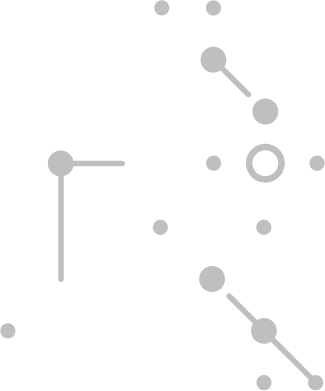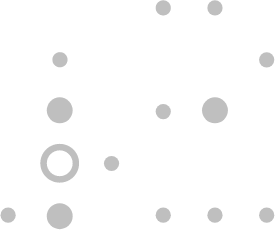



Life Sciences And Cloud Computing: Technology at the Service of Scientific Research
2023-10-16 15:01:16Machine Learning and Big Data have been on everyone’s lips in the last 12 months.
ChatGPT took the world by storm almost overnight. Suddenly, the entire world started talking about the power of Generative AI. But some other science and tech advancements also make it evident that ML and Big Data will dominate the IT sector in the foreseeable future.
AlphaFold is the winner of the 2022 edition of the Breakthrough Prize for Life Sciences – sometimes considered a stepping stone for the Nobel Prize. Created by scientists from Google’s DeepMind, the AI system accurately predicts 3D models of protein structures.
Protein shapes dictate what they can do, so this development helps detect pathogens and neoplastic changes in early development stages. This accelerates research in multiple fields, from drug design to synthetic biology, nanomaterials, and a general understanding of cellular processes.
Groundbreaking scientific advancements wouldn’t be possible without significant investments in IT infrastructure, especially in the cloud and AI.
Read on to learn more about the fascinating relationship between life sciences and cloud computing.
Life scientist’s blessing and curse: data
Life sciences have always depended on swathes of data—the more data, the better.
From genomic sequences to trial results, data informs discoveries, enables drug development, and guides personalised scientific approaches, advancing the understanding of biology and related fields.
Unlike other powerful technologies, AI succeeded in capturing the popular imagination thanks to its ability to process previously unimaginable volumes of information.
While creating and training simple AI models on a local computer is possible, more advanced models require far larger datasets and much more computing power.
One of the first significant projects of OpenAI – the company behind ChatGPT – was a hide-and-seek game. AI-powered agents formed two opposing teams and learned to play the game by trial and error. It took about ten million matches between groups before they learned how to win over each other.
Despite being feasible in local environments, such simulations bring far better and faster results when performed in the cloud.
But there are many more reasons why life sciences and cloud computing make such a great couple.
Life sciences and cloud computing: main benefits
Cost optimization
Cloud computing in life sciences reduces capital expenditures by eliminating the need for extensive hardware investments. Pay-as-you-go enables scientific organisations to scale resources according to requirements, ensuring cost efficiency and redirecting funds toward critical research.
This is evident, especially in jobs requiring high computational power resources for complex simulations and data analysis tasks. The cloud allows scientists to commission instances like EC2 P5 and remove them when they no longer need them to reduce costs.
Flexibility
Cloud platforms offer a dynamic ecosystem for scientists, enabling quick deployment and experimentation with the tools and software they need for their research. This agility accelerates development cycles and supports adaptability to changing project requirements.
Scalability
The scalable nature of cloud services is invaluable in handling resource-intensive tasks, such as genomic sequencing and molecular simulations. Researchers can access the computing power they need precisely when needed, ensuring optimal performance without overprovisioning or delays.
Improved performance and efficiency
Cloud-based high-performance computing streamlines complex data analysis and reduces research cycles. This efficiency translates to faster insights and hypothesis testing, accelerating scientific discovery and breakthroughs.
Better data sharing
Cloud-based collaboration tools enable seamless data sharing across science teams and institutions. This facilitates interdisciplinary collaboration and knowledge exchange, accelerating the collective progress in life sciences research.
Information security and compliance
Cloud providers implement rigorous security measures and compliance protocols, ensuring the confidentiality and integrity of sensitive patient data. This fortified cloud security framework aligns with industry regulations, such as HIPAA and GDPR, safeguarding data privacy and research integrity.
Access to HPC and other specialised resources
Cloud users get access to high-performance computing (HPC) resources and significant computational power to handle complex simulations, data analysis tasks, and training complex AI models.
This is crucial for tasks like molecular modelling and simulation, drug discovery, biomarker identification, and disease diagnosis, which all require significant computational resources.
Cloud computing facilitates and accelerates research
The ability to significantly support and speed up research is why the most popular Machine Learning tools offer cloud integration.
For example, TensorFlow offers a TensorFlow Cloud library, enabling easy migration from building models locally to distributed training and tuning on Google Cloud.
Moreover, Google offers a Cloud TPU service providing access to Tensor Processing Units (TPUs). These custom-designed application-specific integrated circuits are optimised for training and inference of Machine Learning models, such as natural language processing, computer vision, and speech recognition.
Compared to traditional CPUs, TPUs significantly outperform them in ML workloads. They also provide competitive performance against GPUs, especially in deep learning tasks, while consuming less power for similar computations.
Fostering even more innovation
Another critical technology trend in recent years is the Internet of Things (IoT). As we become increasingly surrounded by electronic devices and sensors, even simple tools like watches are becoming smarter than ever.
The idea of a “smart home” is no longer a technophile’s wet dream but an everyday reality.
However, to work efficiently, modern devices must communicate with each other. Cloud computing has the power to integrate such systems by providing services that exchange data with IoT appliances.
One great example is AWS IoT Core, which you can use to communicate with and manipulate remote devices over a popular MQTT protocol.
AWS IoT Device SDK works for multiple programming languages, including C++, Python, JavaScript, Java and Embedded C. You can download it and integrate smart devices with cloud-based applications.
An example of its application in life sciences could be monitoring temperature and humidity levels in medical storage facilities. Sensors on devices transmit data to AWS IoT Core, where the SDK helps process and analyse the data, ensuring optimal storage conditions for sensitive medical supplies.
The cloud enables researchers to use various storage solutions–from databases to object storage to safely handle large data volumes while multiple analytic tools process and visualise them efficiently.
The outstanding case of bioscience
Bioscience is another area where the relationship between life sciences and cloud computing is particularly beneficial.
One of the most interesting Polish startups–MNM Bioscience–spent several years creating targeted therapies for patients suffering from tumours. The team used diverse Machine Learning and Deep Learning models to properly diagnose tumour types and develop individual treatment plans with medication tailored to the patient’s needs.
The algorithms behind these models fed on vast clinical records and MRI images, performing millions of simulations to produce the best results. They proved faster and more accurate than human researchers but also required enormous processing power.
Oftentimes, hyperscalers like AWS can provide resources and scalability, storage, and other services necessary to store and process such large data sets efficiently. But there are areas of science where even more computational power is necessary.
Life sciences and cloud computing fighting climate change
Rapid climate changes bring growing investment in natural disaster recognition and prevention, yet another space where AI and the cloud accelerate progress.
Cloud-based systems can monitor various aspects of the natural environment, from weather conditions to seismic activity, and analyse historical and real-time data to mitigate risks before they happen.
One such project is the EU-funded Centre of Excellence for Exascale in Solid Earth (ChEESE) based at the Barcelona Supercomputing Center.
Using exascale computing – systems able to calculate at least 1018 floating point operations per second – ChEESE plans to mitigate geohazards and support authorities in decision-making.
Only some projects require as much power, and in many cases, the specialised offer of hyperscalers can suffice.
For example, Google Compute Engine provides various NVIDIA GPU-enabled Virtual Machines perfect for HPC tasks like weather forecasting. For example, running on a singleTensorFlow deep learning framework on an NVIDIA V100 GPU, the model can run 320-ensemble 6-week forecasts in about 3 minutes. Processing a 1-week forecast takes the algorithm a fraction of a second.
You can run massive parallel computations on a popular CUDA framework using GPU-enabled machines, paying only for the time you deploy GPUs. Once the intensive calculations are done, you can decommission the nodes and avoid unnecessary expenses.
Life sciences and cloud computing: final remarks
Of course, the projects I described above are only a few examples of the fascinating relationship between life sciences and cloud computing. Each day brings new innovative ideas for applying cloud technologies to move the needle on scientific research.
From collecting and analysing massive data sets to AI-assisted research, cloud computing is a readily available and cost-efficient solution for both small startups and large companies.
Freed from the need for upfront investment in hardware and data centres, life science teams can quickly start and adapt their research as they see fit. Scientists can now do and achieve much more by getting access to dozens of readily available storage solutions, analytic software, and ML apps.
Complex algorithms, advanced data analysis, and automation tools that in the past would require an entire IT department to run are now at your fingertips.
Make them work for you – consult your needs with experts specialising in cloud solutions for scientific research. Drop us a line, and let’s get started!

